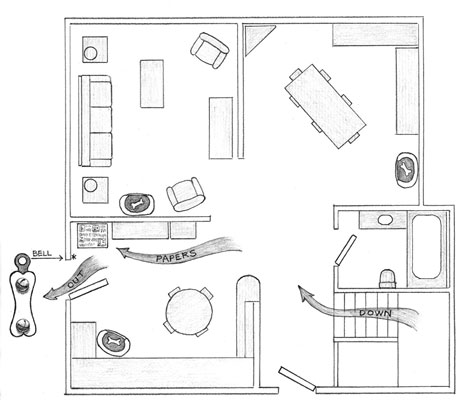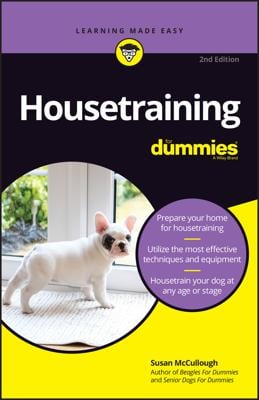Even though puppy housetraining is a project that requires consistency and cooperation, it is, by all means, very doable. If your housetraining efforts are proving to be less than effective, you need a fresh approach. You need a program that you can apply whether your pup’s target is grass, papers, city cement, or gravel. Rest assured, housetraining your puppy is just a matter of time.
Picking your puppy’s potty place
The first step to housetraining your puppy is to pick her potty place. Because the goal is to teach your puppy to leave her living space to go to the bathroom, outdoors is ideal — or if your goal is to paper-train your dog, taking her out of your living space and into the garage or mudroom is best.
If you’re teaching your puppy to go outside, keep your initial potty area 10 to 20 feet from the door to help your puppy stay focused on the goal of your outings. Take your puppy to her toilet area on a 6-foot leash and wait until she’s pottied to pet, play, or walk her.
City people often have to start paper training until their puppy has received her inoculations. You may also want to choose paper training over taking your dog outside if you have a small dog or indoor lifestyle.
Whatever you choose, many of the same rules apply:
Consistently use the same bathroom spot (inside or out).
Use a word or phrase — such as “Papers” — when you lead your puppy to the area.
After you bring your pup to the area, ignore her until she eliminates.
While your puppy is eliminating, use a word or phrase such as “Get busy.”
Don’t use the potty place for play or interaction.
If you’re paper training, keep the papers away from your pup’s food and water bowls and sleeping areas. Place the papers in a discreet location, such as a corner of the kitchen or bathroom, on a nonabsorbent surface (tile, linoleum, or wood), and make sure they’re easily accessible to your puppy, even when you’re not home.
Establishing a housetraining routine
Your puppy will need to go outside or to her papers to potty after she eats her meal, drinks, and wakes up from a nap, and during long sessions of chewing or playing. Establishing a routine early on can cement her understanding of “holding it” until she reaches her potty place.
After you’ve selected the potty area, follow these guidelines:
Blaze a trail. Always follow the same path to the potty spot, be it papers or outside. Encourage everyone to follow this route. See the following figure for an example.
 Credit: Illustration by Barbara FrakeFollow the same path to your puppy’s potty area because consistency breeds understanding.
Credit: Illustration by Barbara FrakeFollow the same path to your puppy’s potty area because consistency breeds understanding.Withhold attention. Pet your puppy after she’s gone to the bathroom.
Don’t roam.
Say a command while she potties. While your puppy is eliminating, use a second command such as “Get busy!” After a month of saying this phrase while she’s in the process of pottying, your puppy should be able to go on cue.
To put the hurry on your puppy’s housetraining connection, use a clicker with a food reward. The moment your puppy eliminates in the right place, click and then reward her with a treat.
If your puppy doesn’t eliminate within 5 minutes, either carry, crate, leash, or otherwise confine her for 5 to 15 minutes before trying again. Not only does this step prevent an accident, but it also helps your puppy build her bladder muscles and her ability to hold it. Whining, nipping, and frenzied activity are all signs she may need a potty break.
Getting on a potty-time schedule
Just how many potty breaks your puppy needs depends on the puppy's age. Really young puppies (younger than 12 weeks) may need to go outside every hour or two. Older puppies can hold out quite a bit longer.
Use the following general guidelines for your puppy and set up a daily housetraining schedule:
| Puppy’s Age | Number of Potty Breaks a Day |
|---|---|
| 6 to 14 weeks | 8 to 10 |
| 14 to 20 weeks | 6 to 8 |
| 20 to 30 weeks | 4 to 6 |
| 30 weeks to adulthood | 3 to 4 |

